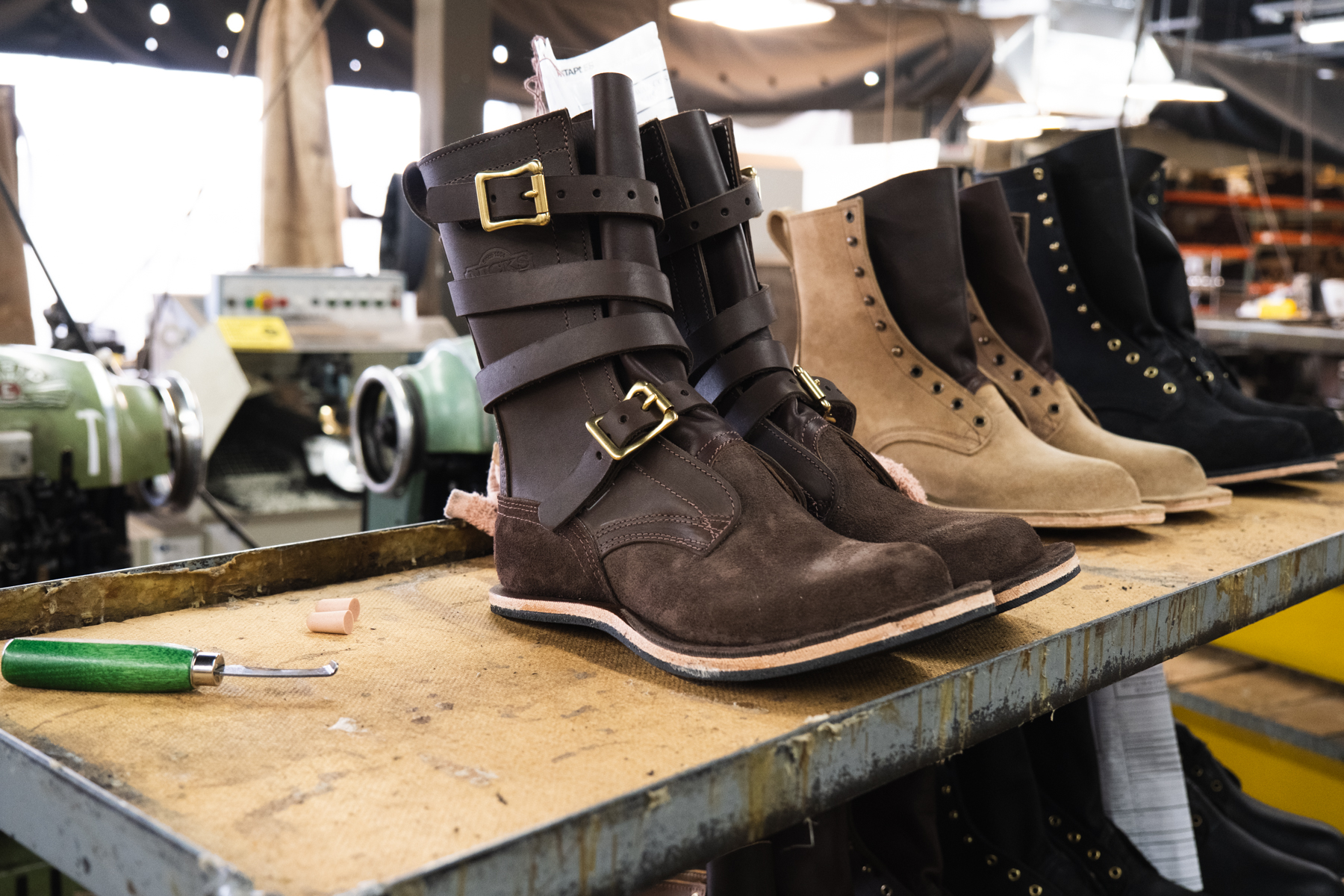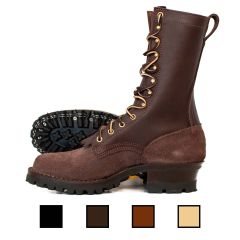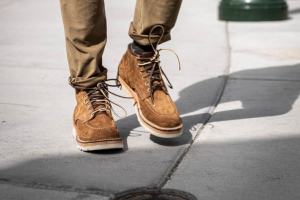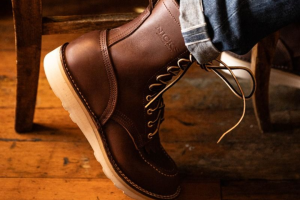How Boot Soles Get Attached

There are multiple ways to attach boot soles. Exactly which one was used for your boots depends on the exact design of the boot, the design of the sole, as well as who made it. Not everyone does the same things the same way!
You'll often find that work boots are usually built a little more sturdily than a lot of fashion boots and shoes...but some heritage boots for casual wear are made just as tough as work boots are.
It can matter a lot more than you'd think, as sole separation is a possibility with some methods for attaching soles to shoes. That's why you'll hear of some people carrying "Shoe Goo" and other adhesives to keep theirs together in the field or otherwise on the job. For the office worker with leather shoes or boots it's really not a big deal, but it can be for other people!
So let's talk about boot soles.
Two-Piece And One Piece Boot Soles
Before we get into how they get put on, we should mention that boot soles are either one-piece or two-piece. This actually makes a difference in how your boots are built, as a two-piece sole usually requires an additional step or two (sometimes several) to assemble.
A two-piece sole comes with a heel block, which has to be attached after the boot sole is put on. Sometimes there's a few layers of material inserted under the sole to give the heel some additional rise, which is the "heel stack."
Some boots have a tall heel stack, such as logger-style boots, and some have a minimal heel stack depending on the design of the boot in question. In some cases, the heel block is attached to the sole itself to give the boot a minimal heel drop, which some find preferable.
One-piece soles usually have a moderate heel rise, giving those boots a bit more of a neutral, almost flat feel. Some people prefer it; that's part of why a lot of people love the classic wedge sole moc toe boots.
With that said, here's how they get put on…


Most Boot Soles Are Glued
By volume, almost all boots on the market have the soles glued on.
Whether the boot is a total cement construction (the boot shell is glued directly to the the sole, common with imported boots or boots with synthetic uppers) or welted (a the upper is stitched to a leather midsole) the sole is just glued on.
A great many welted and stitchdown boots have the sole glued to the midsole or slipsole. After the upper is stitched together, the factory or bootmaker will score the top of the sole and the underside of the midsole/slipsole, apply glue, and press them together.
The glue and the quality control of the factory are all that hold the boots together.
For two-piece boots, the heel and heel stack can be glued or will sometimes be nailed to the midsole to attach it. Lower-cost examples will often only have the entire heel stack nailed in at once.
Heavier-duty builds - and this is what you want to pay extra for - will nail each layer of the heel stack in place for maximum durability. This also gives the heel a bit more rigidity, which helps it absorb more impact while walking around.
Some Boot Soles Are Stitched
Stitching the soles to the upper is another method, but exactly how it's done depends on how your boots or shoes are being made in the first place.
A common construction method for dress shoes and fashion boots is what's called a Blake stitch, which is where the sole is directly stitched to the upper. Most dress shoes have a heel block, which is nailed or glued to the sole.
The Blake stitch creates a very flexible shoe but lets in moisture easily, isn't very durable and tends to work best with softer soles. It isn't really suitable for working footwear, but is a way that some boot soles are attached.
Some boot companies will add stitching through the sole at the point where it's most likely to separate. If you've ever picked up a pair of boots and noticed a row of stitching through the sole at the toe, that's what was done.
And then you have the boot companies that don't compromise their build quality, even on a more fashionable pair of boots. For the most durable construction short of nailing or using screws to attach the outsole, the most fastidious of boot makers will stitch the entire sole to the slipsole or midsole after glueing, to ensure the sole stays attached before attaching the heel.
If you find heritage boots that have a double row of stitching on the sole, that's a pair of casual boots that's built to last.
Nails, Screws And Fasteners For Boot Soles
You can tell that someone really meant business when a pair of boots is built with nails, screws or other fasteners in the boot sole. This means they are making them to be built as solid as a boot can possibly be made.
While it's very common to find nails in the heel block and into the heel stack, when a bootmaker goes beyond that it's a sign the boots are built to be tough, hard-working footwear. The kind of work boots that are made to last.
If you have a tough, very demanding job...that's the kind of work boot you want to have. A pair of casual boots made this way will last a very long time, indeed.







